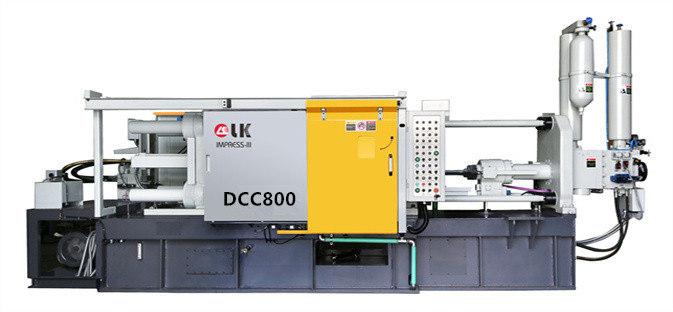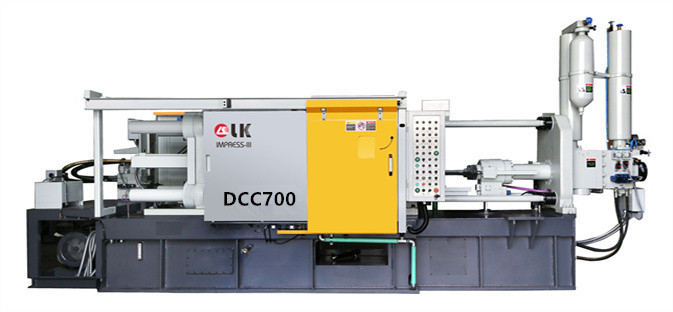Is Die Casting Cheaper than Machining?
LK Die Casting Machine / 2024-07-16 14:50:37
Die casting and machining are two commonly used processes in the manufacturing industry. Cost is a key consideration when companies choose a manufacturing method.
This article will explore the cost structure of die casting and machining in detail and analyze which process is more economical and affordable to help companies
make the best decision.

1. Overview of die casting and machining
1.1 Die casting
Die casting is an efficient manufacturing process that injects molten metal into a mold under high pressure to form metal parts with complex shapes.
Die casting is widely used in industries such as automobiles, electronics, and aerospace, and is suitable for mass production.
1.2 Machining
Machining is a traditional manufacturing process that removes excess material from metal blocks to form the desired shape and size through cutting, drilling,
milling, turning, etc.
Machining is suitable for the manufacture of parts of various materials and shapes with a high degree of flexibility.
2. Cost structure
2.1 Die casting cost
Equipment cost: Die casting machines and molds are the main investments, and the initial investment is large.
Material cost: Mainly includes metal materials and mold materials, and metal materials are more expensive.
Energy cost: Die casting requires heating and melting metal, and the energy consumption is relatively high.
Maintenance and repair costs: Die-casting equipment and molds need regular maintenance and replacement, which is expensive.
Labor cost: Although the degree of automation is high, it still requires technicians to operate and maintain.
2.2 Machining cost
Equipment cost: The cost of CNC machine tools, lathes, milling machines, and other equipment is relatively high, but slightly lower than that of die-casting
machines.
Material cost: Including metal block materials and tool materials, the price of metal block materials is relatively high.
Energy cost: Mainly for equipment operation electricity, which is relatively low.
Maintenance and repair costs: Mechanical equipment needs regular maintenance and tool replacement, and the cost is medium.
Labor cost: Skilled workers are required to operate and program and the labor cost is relatively high.
3. Cost comparison analysis
3.1 Initial investment
Die casting: The initial investment is high, mainly the cost of equipment and molds. The mold design and manufacturing are complex and expensive.
Machining: The initial investment is relatively low, the equipment cost is high, but no special mold is required.
3.2 Material Utilization Rate
Die casting: High material utilization rate and less waste. Molten metal is directly formed, which reduces material waste.
Mechanical processing: low material utilization rate and high waste. A large amount of material is removed during the cutting process, resulting in waste.
3.3 Production efficiency
Die casting: high production efficiency, suitable for mass production. Multiple parts can be manufactured in one die casting, and the production cycle is short.
Mechanical processing: low production efficiency, suitable for small batch production. Each part needs to be processed separately, and the production cycle is long.
3.4 Quality and precision
Die casting: high-precision and high-strength parts can be manufactured, but the surface finish is poor and requires subsequent processing.
Mechanical processing: high surface finish and precision can be obtained, but multiple processing is required, and the process is complicated.
3.5 Energy consumption and environmental protection
Die casting: high energy consumption, high-temperature heating of metal is required. Strict requirements for waste gas and waste slag treatment, high environmental
pressure.
Mechanical processing: low energy consumption, mainly electricity consumption. Cutting fluid and waste material treatment need to be paid attention to, but it is
relatively environmentally friendly.
3.6 Labor cost
Die casting: high degree of automation, relatively low labor cost. However, it requires professional technicians to maintain and operate it.
Mechanical processing: requires a lot of manual operation and programming, and the labor cost is high. Technical workers have high requirements.
4. Application scenario comparison
4.1 Die casting applicable scenarios
Mass production: such as automotive parts, electronic product housings, etc.
Complex shape: suitable for manufacturing complex shapes and high-strength metal parts.
High-efficiency requirements: short production cycle, suitable for rapid manufacturing of large numbers of parts.
4.2 Mechanical Processing Applicable Scenarios
Small batch production: such as customized parts, mold manufacturing, etc.
High precision requirements: suitable for high precision and high surface finish parts manufacturing.
Multiple materials: wide range of applications, can process various metal and non-metal materials.

5. Comprehensive evaluation
Die casting and mechanical processing each have their own advantages and disadvantages, and the cost difference is mainly reflected in the initial investment,
material utilization, production efficiency, and labor cost.
Die casting is suitable for mass production, high material utilization, and high production efficiency, but with large initial investment and high energy
consumption.
Mechanical processing is suitable for small batch production, high flexibility, wide range of applications, but low material utilization, low production
efficiency, and high labor costs.
When choosing a manufacturing process, companies should consider product demand, production batch, material characteristics, and cost budget. In the long run, die
casting has obvious cost advantages in mass production, while the flexibility and high precision advantages of machining in small batch production cannot be ignored.
Choosing the right process according to the specific situation can effectively control costs, and improve production efficiency and product quality.
Conclusion
Die casting and machining have their own advantages in cost. Which process is cheaper depends on production needs and application scenarios.
For mass production and parts with complex shapes, die casting has lower costs and higher efficiency. For small batches, high precision, and multiple materials,
machining has more advantages.
Companies should consider the specific situation comprehensively and choose the most suitable manufacturing process to achieve the best cost-effectiveness.
For more info, you can refer to: https://www.youtube.com/shorts/JLX410QV_kw
Contact LK Egypt to learn more info about the die-casting machine
LKAGENT OFFICE DCM
Address: Industry Zone, South of Port Said Kebly, Egypt
https://www.zazdiecasting.com/
Phone/WhatsApp/Wechat: +86 13598704163
Mobile: +20 101 304 3317 +20 150 181 8310
Email: jack@zazmae.com ahmedmahmoud@zazmae.com
#die cast tooling
#trivalent chromate
#rapid prototype casting
#a360 aluminum
#aluminum caster
#aluminum prototype
#ideal 55 slider parts
#density of aluminum kg/mm3
#magnesium sheet metal
#parts of a metal gate
#subcontracting of screw machining for the luxury sector
#wall aluminum
#die casting tooling
#tooling for die casting
#density of aluminium in kg mm3
#clear chromate
#es casting metals
#gating material
#prototype aluminum
#sigma castings
#subcontracting of screw-machining for household appliances
#we squeeze to please machine
#aluminium gravity die casting
#aluminum part
#aluminum rapid prototyping
#nickel casting
#plunger tip for die casting machine
#rapid prototyping aluminium
OTHER CONTENT
-

2024-09-19 14:16:15 LK Cold Chamber Die Casting Machine DCC900 Locking Force: 9000KN Die Height: 400-1000mm Space Between Tie Bars: 930x930mm Shot Weight: 13.5Kg Casting Area Max:2250c㎡
More -

2024-09-19 14:11:06 LK Cold Chamber Die Casting Machine DCC280 Locking Force: 2800KN Die Height: 250-650mm Space Between Tie Bars: 560x560mm Shot Weight: 2.9Kg Casting Area Max:700c㎡
More -

2024-09-19 10:23:07 LK Cold Chamber Die Casting Machine DCC580 Locking Force: 5000KN Die Heigh: 350-850mm Space Between Tie Bars: 760x760mm Shot Weight: 6.9Kg Casting Area Max:1250c㎡
More -

2024-09-19 10:11:20 LK Cold Chamber Die Casting Machine DCC400 Locking Force: 4000KN Die Height: 300-700mm Space Between Tie Bars: 669x669mm Shot Weight: 4.7Kg Casting Area Max:1000c㎡
More

